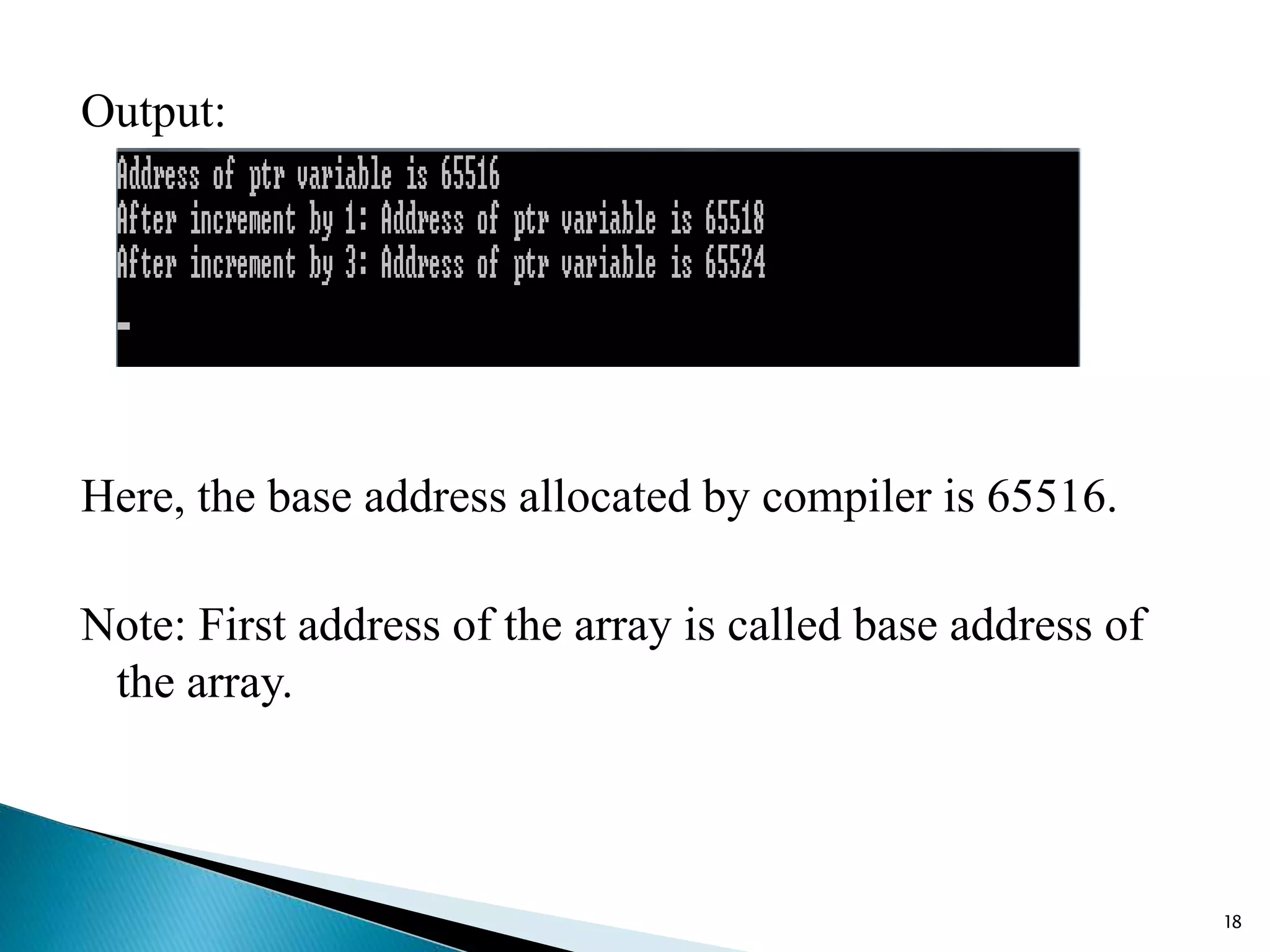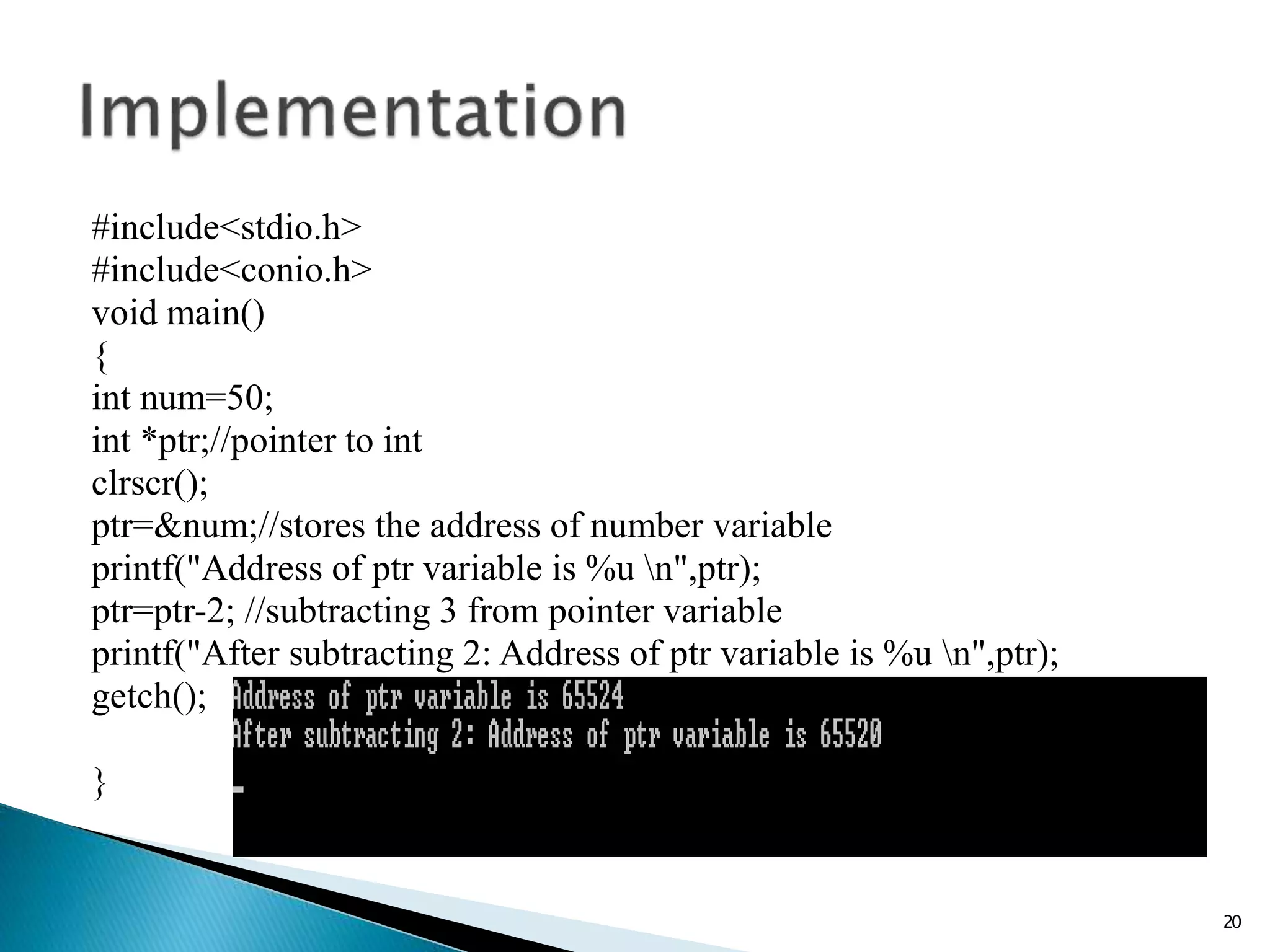The document provides an extensive overview of pointers in C programming, explaining their definitions, functions, and memory representation. It covers pointer declaration, assignment, arithmetic operations, and comparisons, alongside practical coding examples. It highlights the application of pointers in dynamic memory allocation and their importance in improving code efficiency and performance.
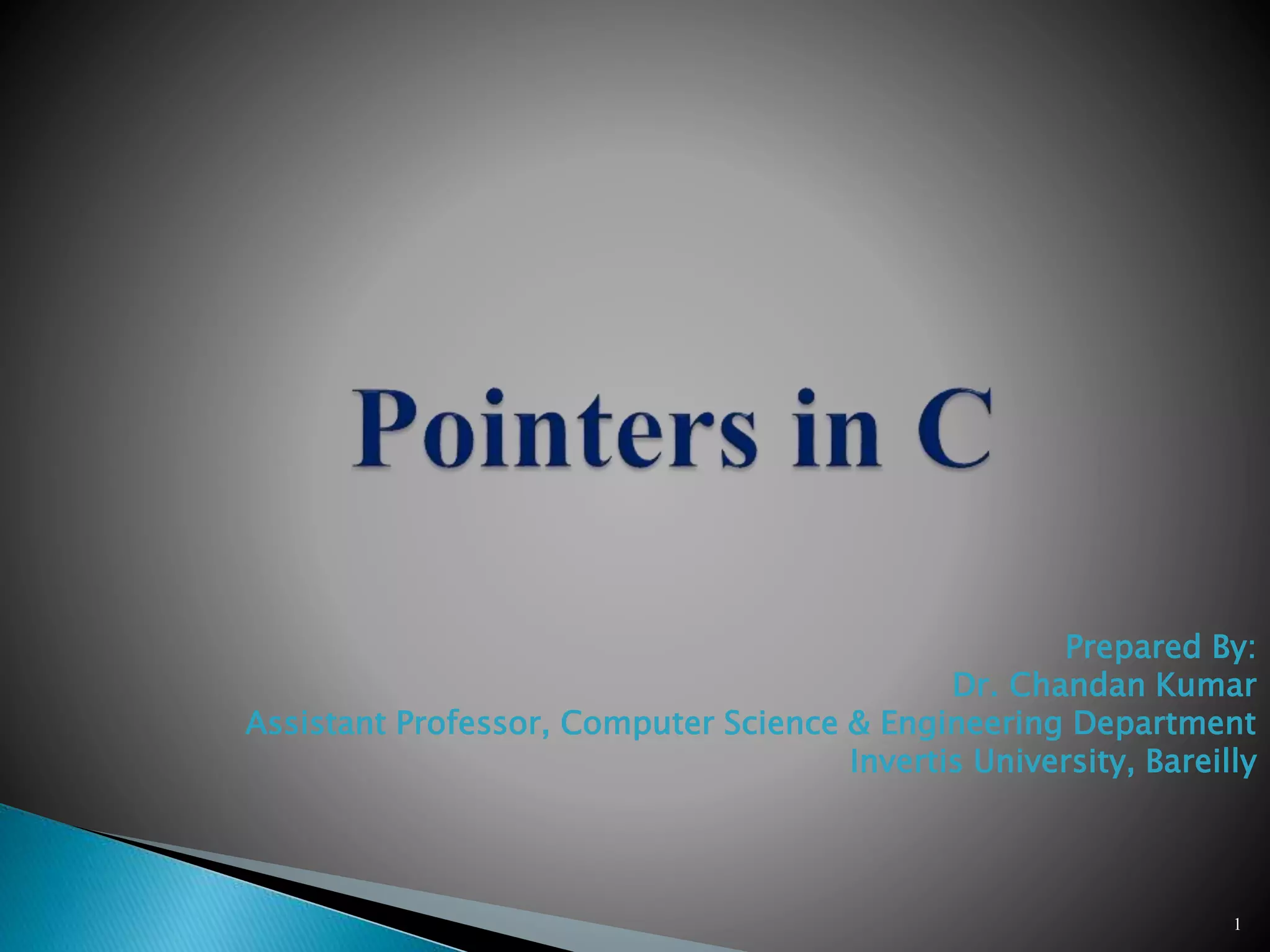
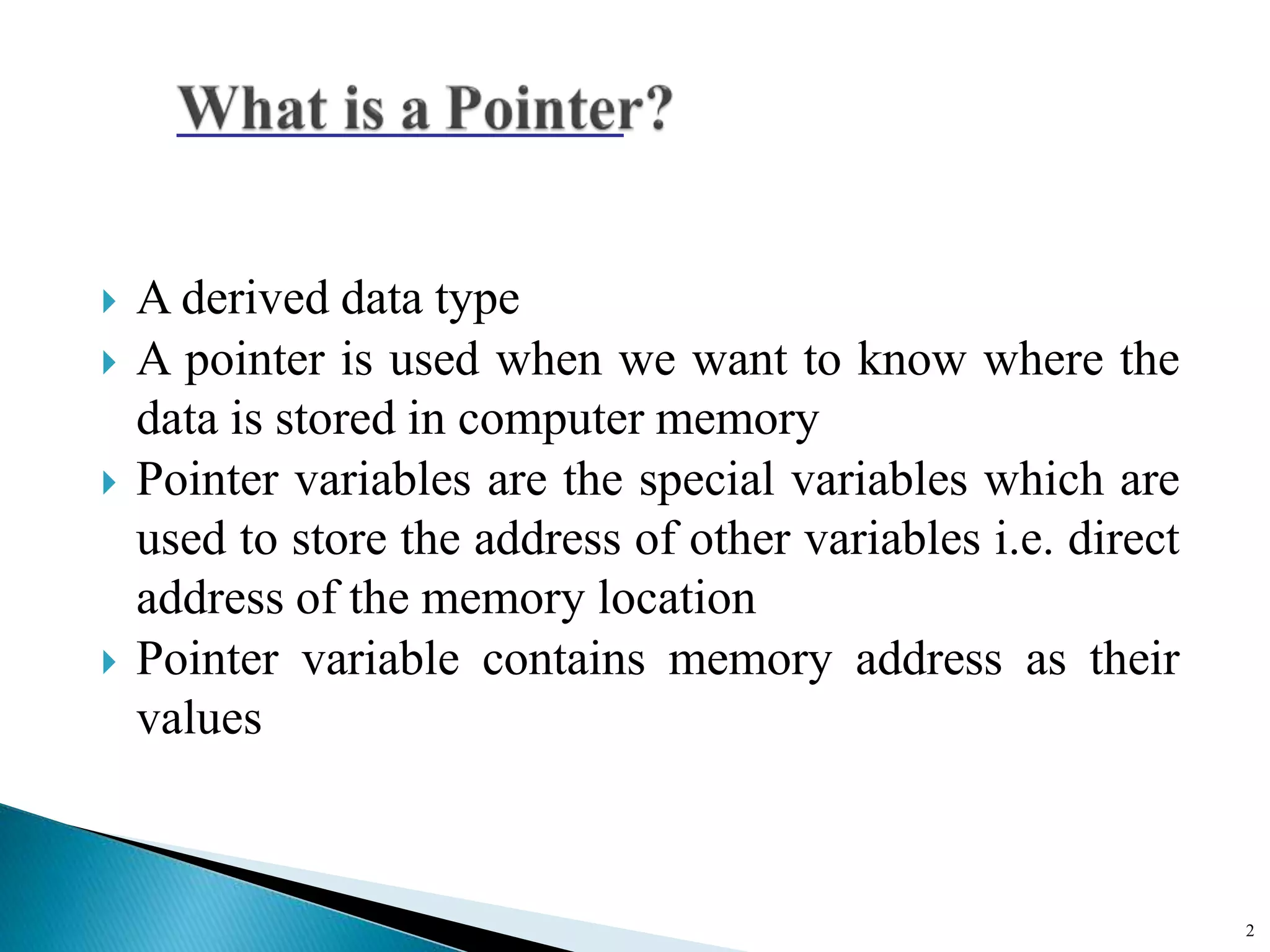
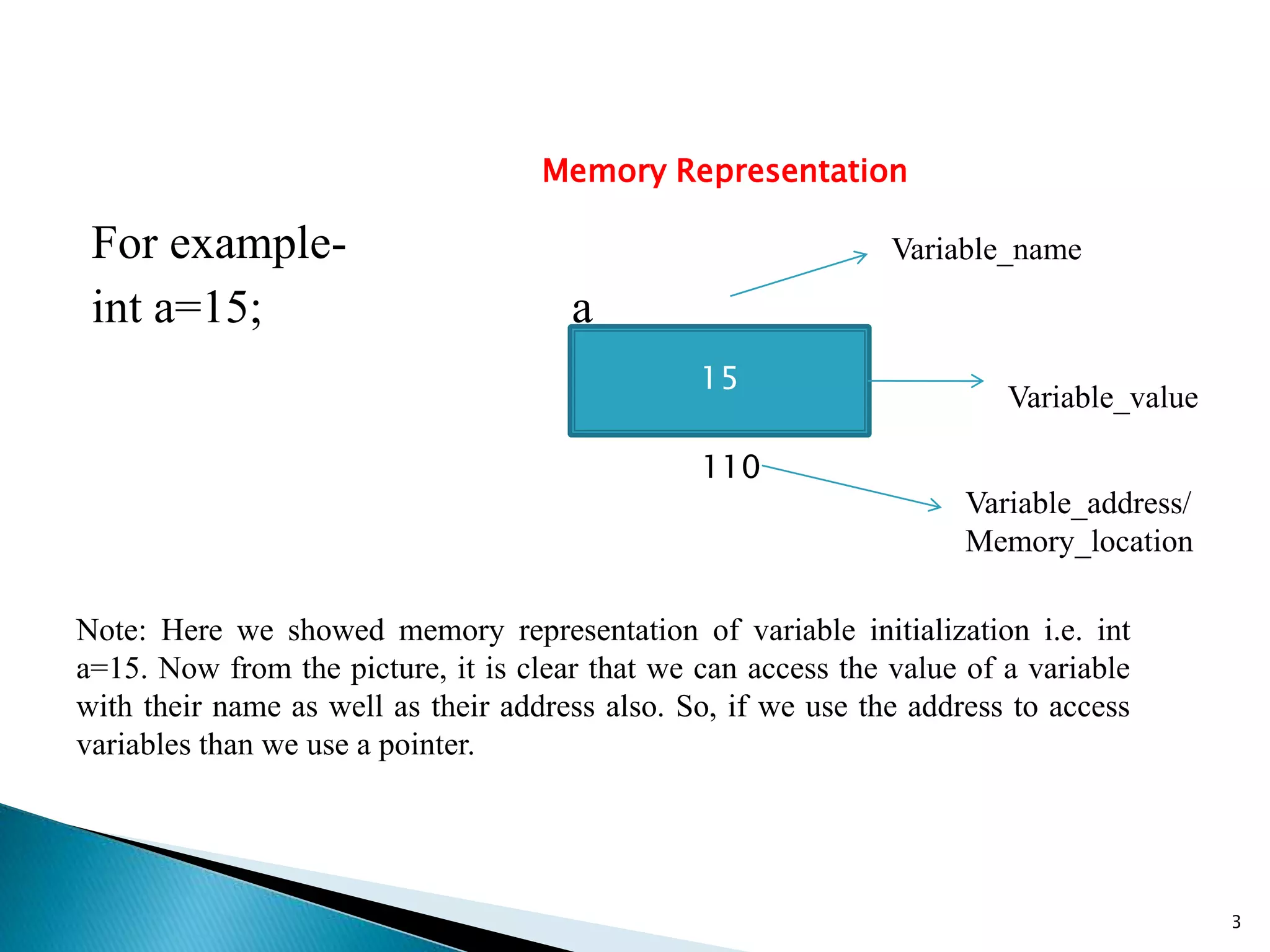

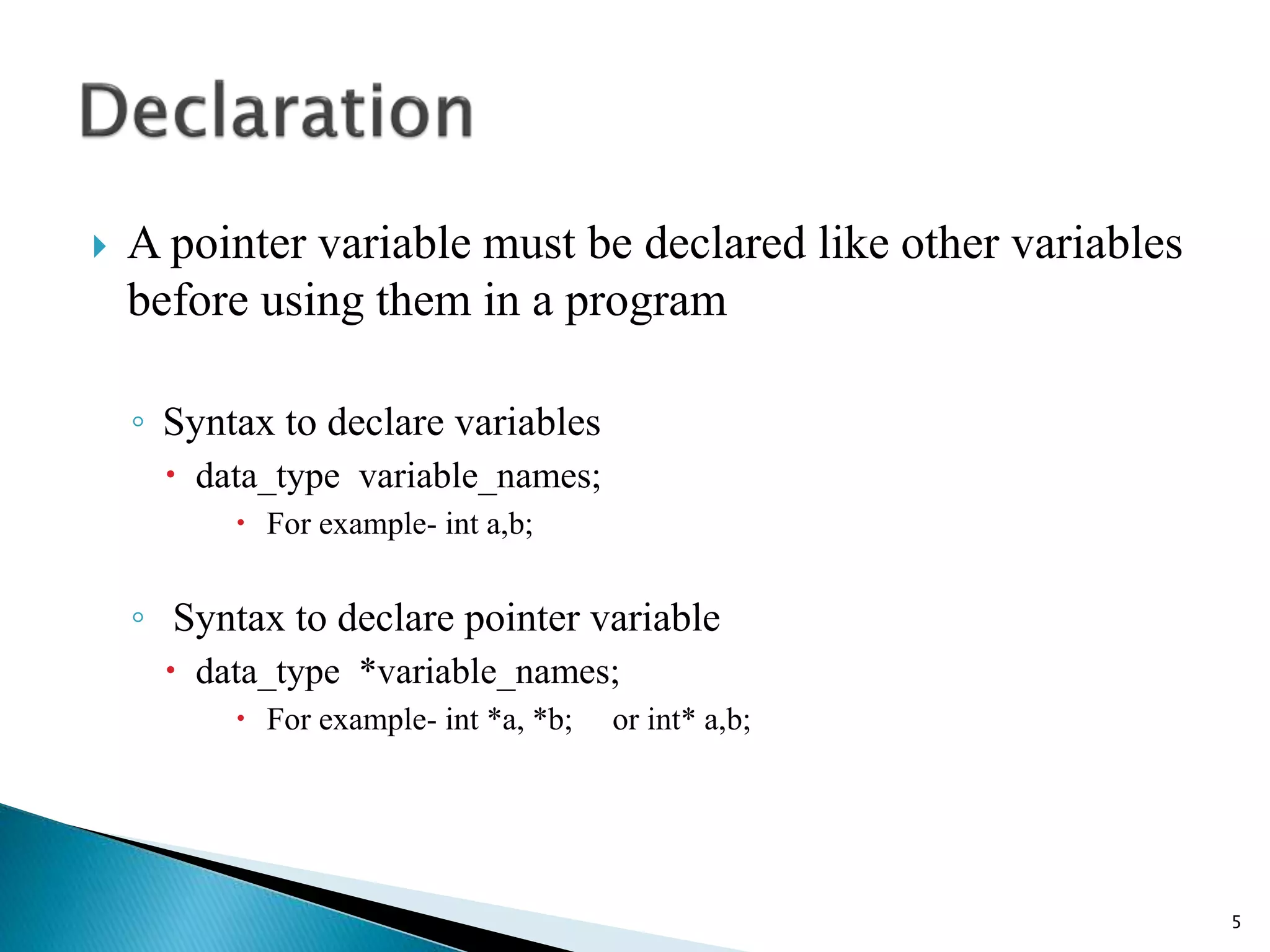

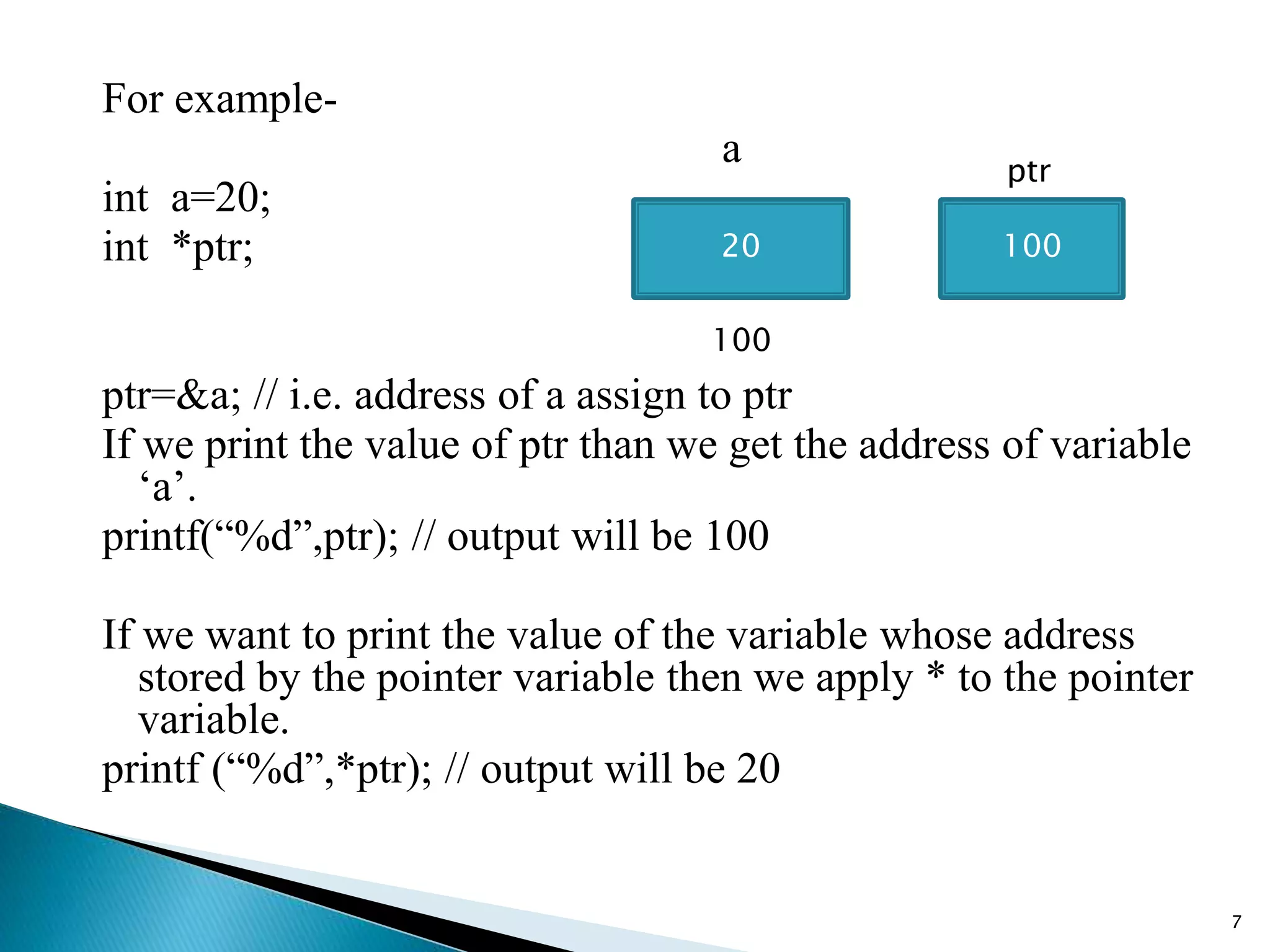
![ Like other variables, pointer variables are also
initialized
◦ Syntax to initialized other variables
data_types variable_names=values;
int a=5;
int x[5]={10,20,30,40,50};
◦ Syntax to initialized pointer variable
Data_type *variable_name=&variable_name;
int *ptr=&a;
8](https://image.slidesharecdn.com/pointersinc-200512070133/75/Pointers-in-c-8-2048.jpg)

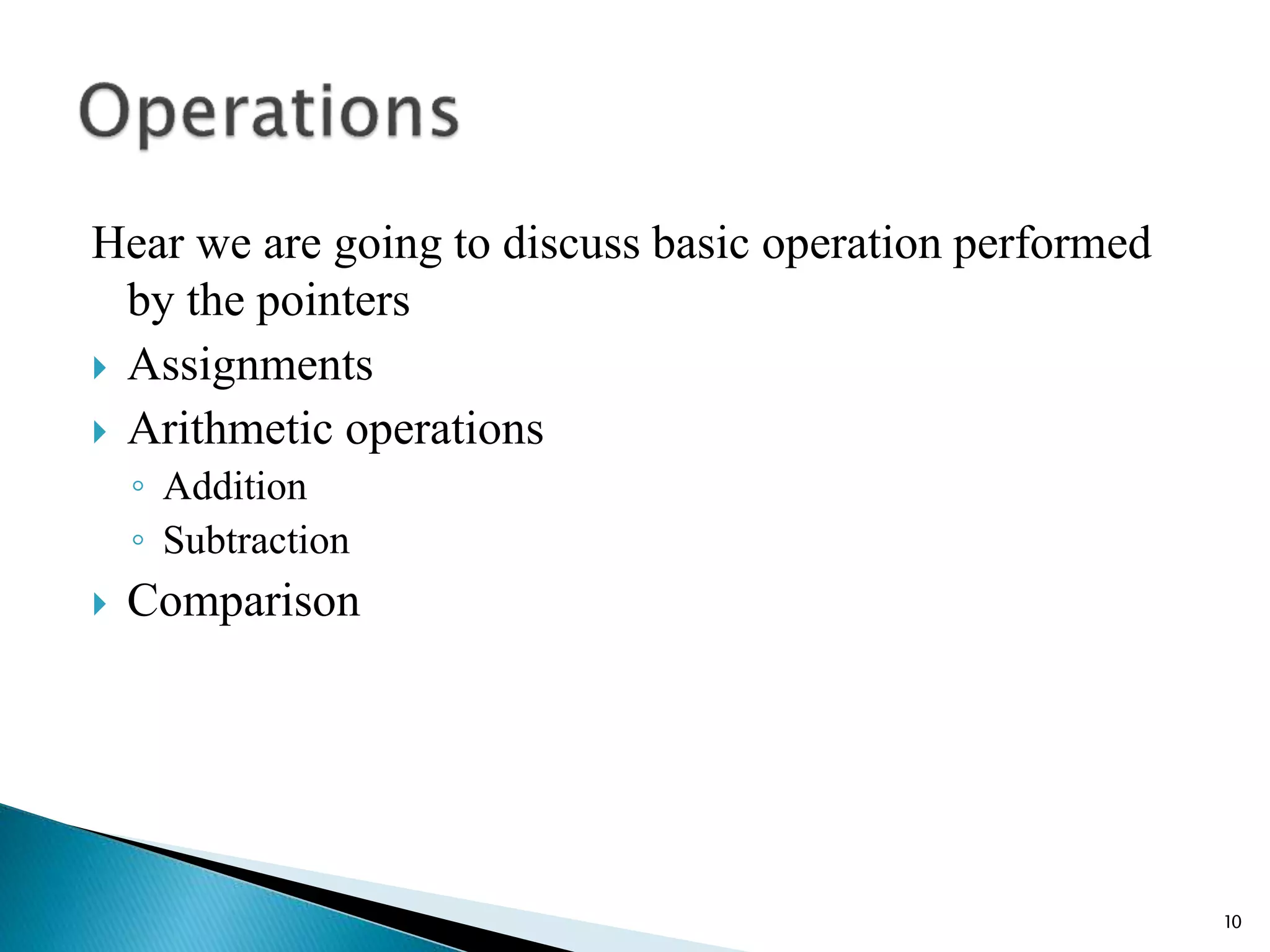

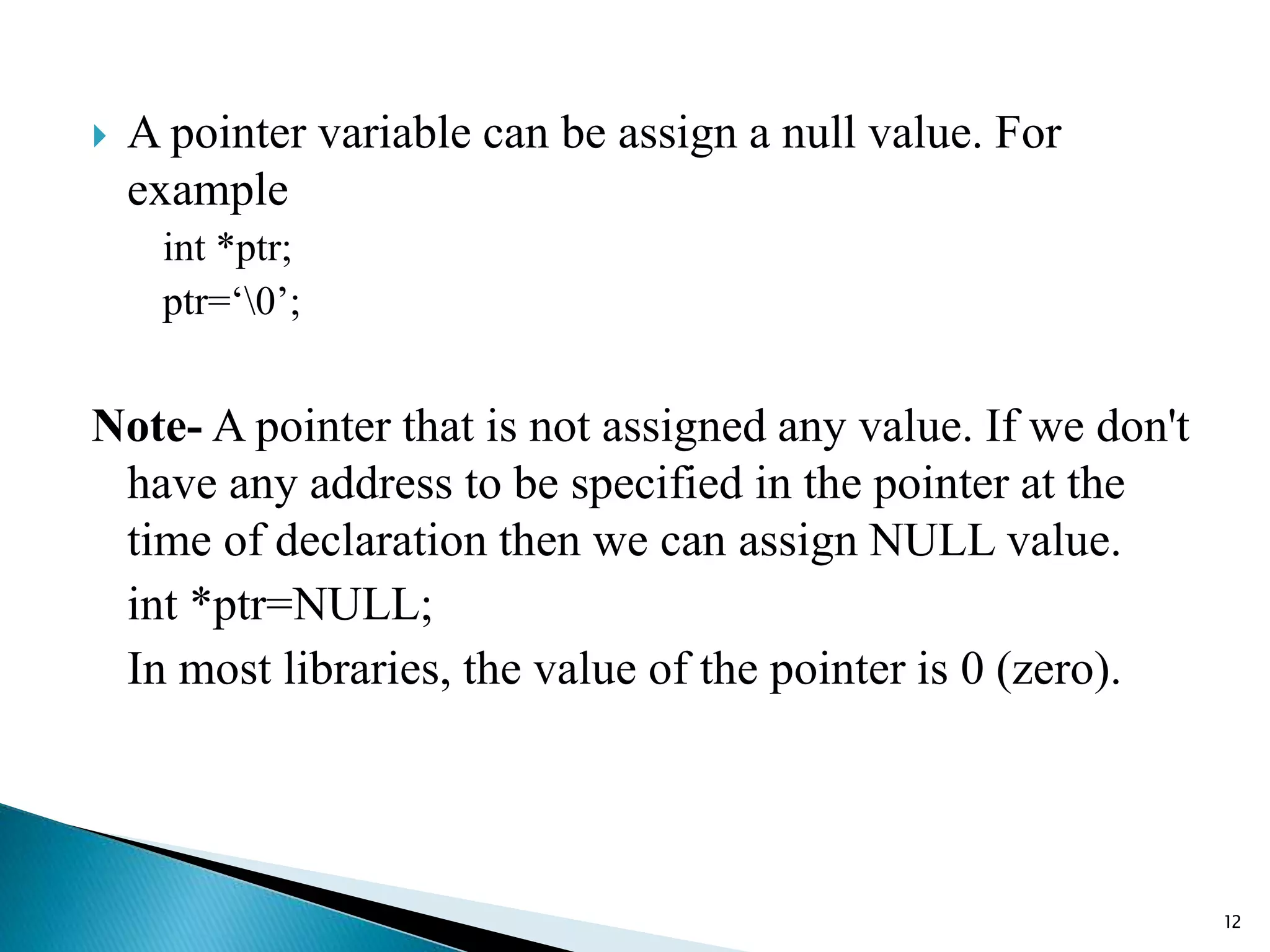

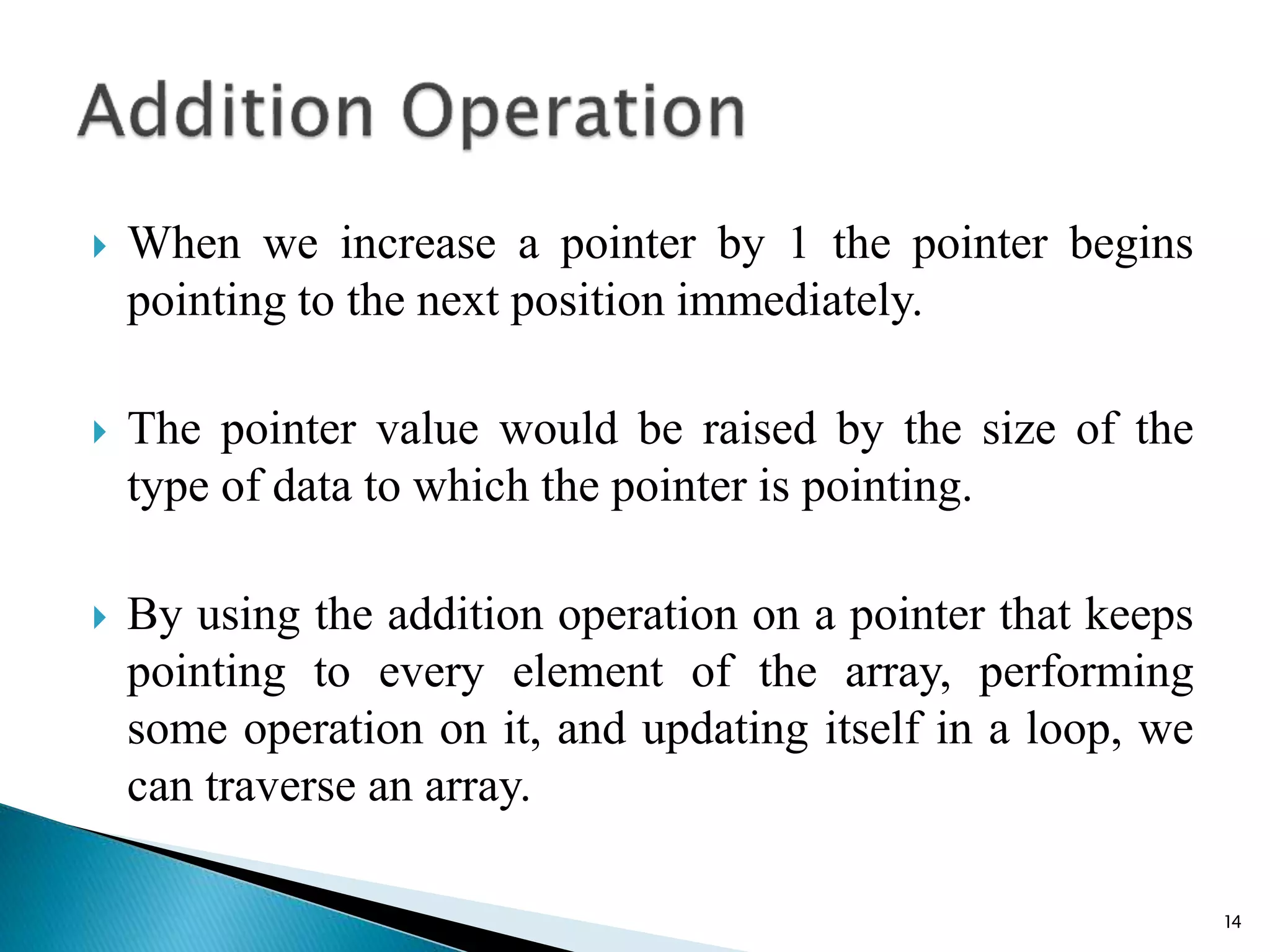
![For example
int a[5]={10,11,12,13,14};
int *ptr;
Ptr=&a or &a[0];
ptr++;
or
ptr=ptr+1 Base Address
Gives address of the next element in a list
i.e. here the new address will be 102
New_address= current_address + n*size_of(data_type)
Where n is the number by which the pointer get incresed
15
Memory Representation](https://image.slidesharecdn.com/pointersinc-200512070133/75/Pointers-in-c-15-2048.jpg)
![ptr=ptr+3
= &a + 3* size_of(int)
= 100+3*2
= 106
It denotes address of a[3] element in the array.
16](https://image.slidesharecdn.com/pointersinc-200512070133/75/Pointers-in-c-16-2048.jpg)
![#include<stdio.h>
#include<conio.h>
int main()
{
int a[5]={10,11,12,13,14};
int *ptr;//pointer to int
clrscr();
ptr=&a[0];//stores the address of n variable
printf("Address of ptr variable is %u n",ptr);
ptr=ptr+1;
printf("After increment by 1: Address of ptr variable is %u n",ptr);
ptr=ptr+3;
printf("After increment by 3: Address of ptr variable is %u n",ptr);
getch();
return 0;
}
17](https://image.slidesharecdn.com/pointersinc-200512070133/75/Pointers-in-c-17-2048.jpg)
